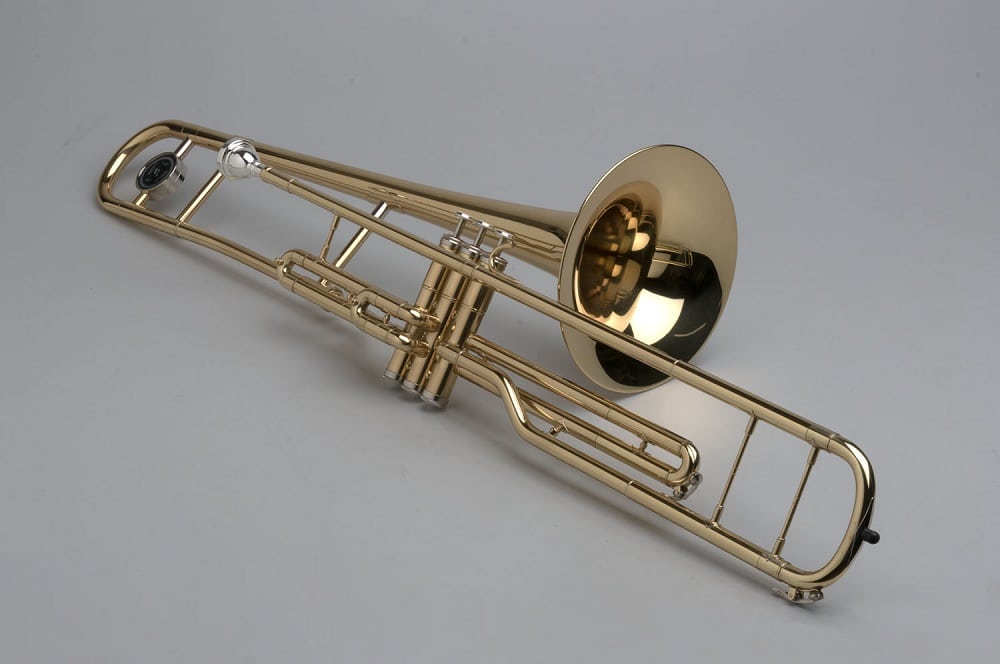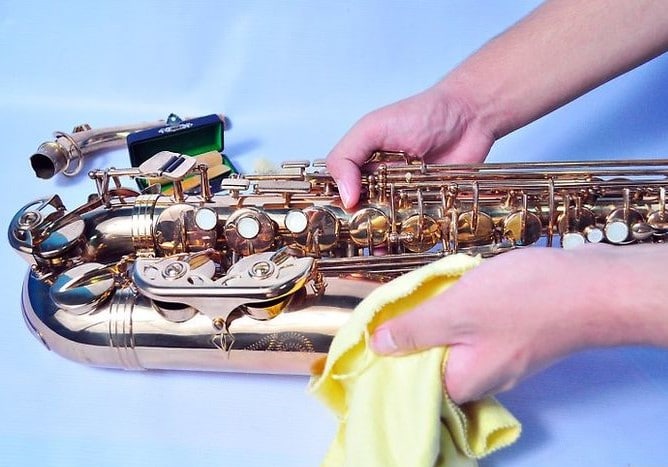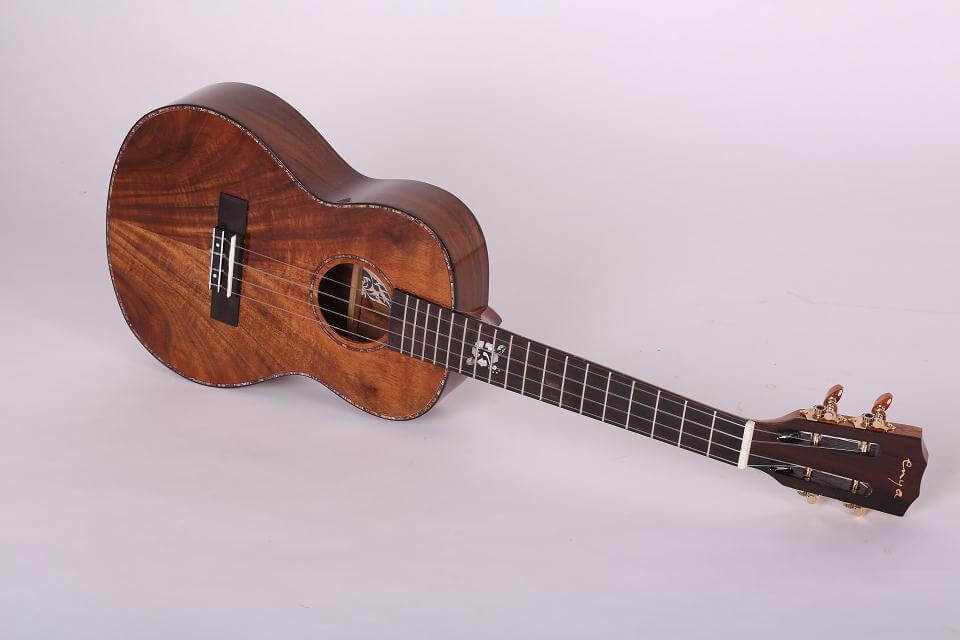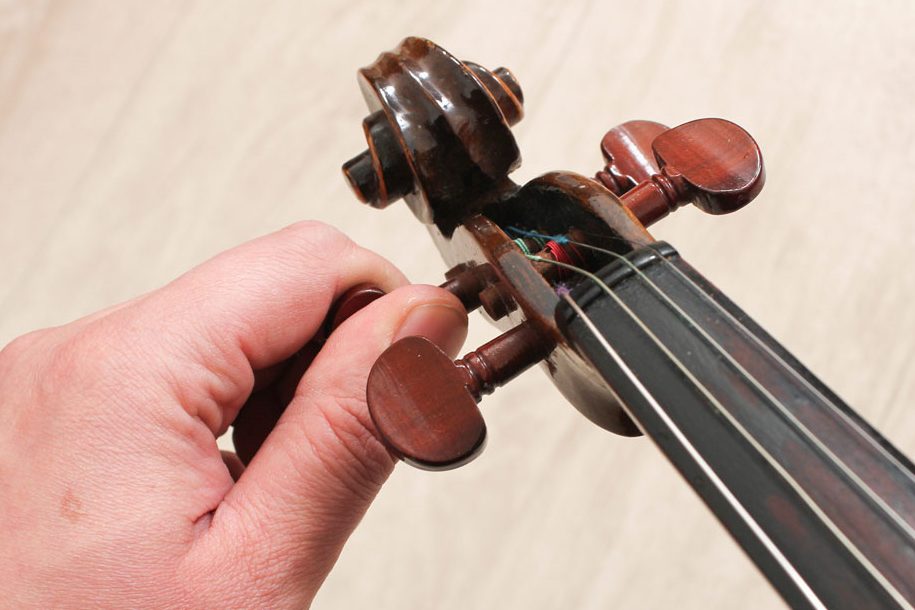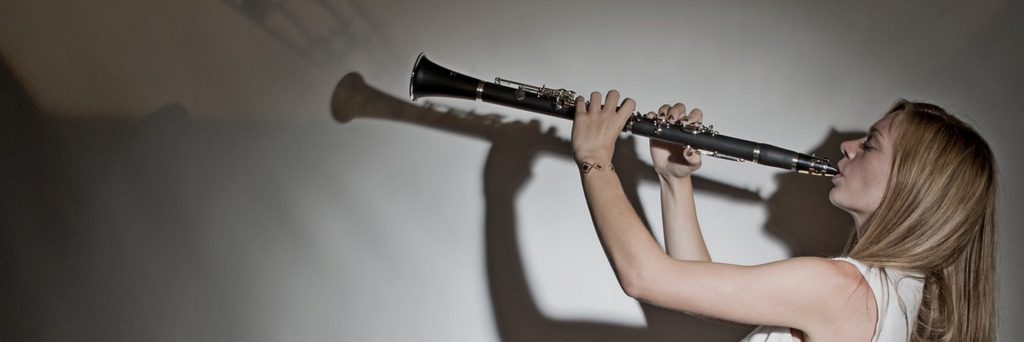Do you know that flute playing can be beneficial for your health? Research shows that it can help to improve your breathing, increase lung capacity, and boost blood circulation.
We’ve reviewed 27 products to select 7 best flutes. Gemeinhardt 3OB is our Editor’s Choice. We considered the size and weight of each model as you want an instrument that is comfortable to hold. We checked the key type as it affects the playability (open, closed). The closed type is considered to be more beginner-friendly. Next, we looked for the key tone that determines the number of notes the flute can produce. C is the most versatile as it allows you to play a wide range of music. Finally, body and plating material is important affecting the durability of the instrument.
More features: 5-year warranty on parts and workmanship, four-post foot joint construction
The Gemeinhardt 3OB is a C flute that can be played by both the student and the experienced flutist. It weighs only 2.6 pounds, its light weight making it a great companion to the beginner just learning to play the flute as they can hold it for long periods with ease.
It is silver plated and gives a rich, warm tone. To preserve the silver finish, the manufacturer includes an anti-tarnish strip, which will keep your flute looking new and lustrous for long.
The flute has a B footjoint that extends the bottom range and an offset G key. Beginner players will enjoy how easy finger placement is in this offset positioning. But even if you’re used to playing an inline G key, you’ll quickly adjust to the slight variation in finger placement.
Gemeinhardt gives a 5-year warranty on parts and labor. It’s hard to beat this warranty; it’s comprehensive and lasts long enough for you to derive value from the flute. More importantly, in case any component of the flute gets faulty during this period, you can be sure the manufacturer will give a replacement and service the flute as needed. Note that the warranty doesn’t cover maintenance and repairs, so you have to meet the cost of these out of pocket. A proper maintenance routine for things like calibration of the keys, cleaning, and polishing will give your flute a longer shelf-life.
More features: split E mechanism, high wave embouchure
Pearl PFP105E, a piccolo flute with closed key mechanism, can be played by both students and intermediate players. The flute is made from the revolutionary Grenaditte composite material, a wood look-alike that gives the warm, rich sound of wood timbre, but unlike wood, it weathers humidity and temperature fluctuations well. This quality alone makes it perfect for playing in the outdoors, especially if playing in regions with inclement weather.
The keys are silver-plated for sturdiness and protection from reactive elements. The headjoint comes in a high wave style rather than the traditional straight style, and this new design gives better control and improved focus. The key arms are pointed, and though this may not necessarily have any impact on the flute’s playability, it’s important to note for players who prefer one arm shape over the other.
In this flute, Pearl uses Split E-Mechanism, their patented exclusive mechanism, which features Pinless Construction and One-Piece Core-Bar for smooth key action and response.
It comes with a hard case and soft case cover for safe storage. Also included is a cleaning cloth that makes wiping down the flute after use easy.
More features: power-forged keys, 1 year limited warranty
A C flute with power-forged keys for extra strength, the Jean Paul USA FL-220 plays well, with the keys responding as you’d expect. It’s made in closed-key design and is beginner friendly. It also comes with a C foot and the student can practice hitting the low C with ease on this footjoint.
The FL-220 has a cupronickel body and nickel plating finish. Though it doesn’t have as much shine as a silver-plated finish, it does look great for the price. Plus you can always get it recoated if it starts to look worn out.
Young beginners will find this flute easy to play because of the offset G key, which allows for smaller hands to reach all keys with ease. It’s also light at only 2.2 pounds which, again, for hands that are not accustomed to holding the flute for long, is a plus.
The flute comes with a full cleaning kit, pair of gloves, and hard case with handle.
Worried about paying a lot of money for a beginner flute which your child may not be interested in playing after a year? The FL-220 is your answer. It costs less than $200 and offers good practice value. But even if your child discovers another instrument they’d like to play in the future, you won’t feel like the money spent on this was a loss given how reasonable the price tag is.
More features: silicone plugs and hard case included
Weighing a mere 1 pound, the Gemeinhardt 3OBGLP is super light and the best choice of C flute for a student who just moved one level up and plans to spend hours practicing each day. It is so light you’ll often forget you’re holding it. With open keys, a gizmo key and a B foot, it gives greater resonance and allows you to extend your range and practice playing the low B key with ease.
Silver plating on both the body and keys prevents corrosion and oxidation, while adding an attractive lustrous finish. The manufacturer includes anti-tarnish sheets with the flute, and these will help sustain the shiny look of your flute for longer. Bonus accessories available with the flute include a plastic cleaning rod, cleaning cloth, plugs, hard case, and a fleece and nylon case cover with pocket and shoulder strap.
The Gemeinhardt 3OBGLP warranty is at par with the very best limited manufacturer’s warranties in this price range and better than what you get with most flutes. It’s valid for 5 years and covers defective parts and workmanship. If you’re worried about the cost of repairs and maintenance, buy your 3OBGLP from an authorized dealer who in addition to the manufacturer’s warranty, offers an additional maintenance warranty. Most dealers issue a 2-year maintenance warranty on average.
More features: includes hard case, 5 year warranty
The Yamaha YFL-221 is a C flute that a student player will play with ease. Its keys are plateau-styled and anyone playing at the student level will appreciate how this positioning of the keys allows them to practice without fiddling much with finger placement. The positioning of the offset G key too is another plus for student players as it allows for a more natural feel and hand positioning while playing.
It’s a silver flute with a silver plating finish that adds a layer of protection for the body and gives it that sparkly shine unique to silver material. Closed holes are beginner-friendly and allow the player to play at a pace they’re comfortable with.
Yamaha give a 5-year warranty for this flute. Just make sure that you’re buying it from an authorized dealer, especially if you’re getting it at a hugely discounted price. The warranty only applies to models bought from authorized dealers. It doesn’t cover repair and maintenance, so make sure you’re not sending it back for repair work as you’ll incur shipping costs and still pay for the repair. Handle the flute with care so that you don’t break the keys, damage the pads, cork, and other components and you’ll have nothing to worry about.
Included in the package is a cleaning kit, a premium YAC-1310 hard case and a soft case inside.
More features: hidden adjustment screws ribbed construction, hard case included
A solidly-constructed, intermediate C flute, the Jupiter 511S feels sturdy in the hands and looks well built. It has a rust-free silver plated finish and a sparkling shine that gives it a premium look. The high quality of workmanship undertaken in making the 511S can be deduced from the ribbed body design which is sturdy and durable. The adjustment screws are hidden and so you run no risk of messing with them as you tinker with the flute.
The flute weighs 2 pounds only and is among the lightest concert flutes available. Because of its closed-hole design, beginners can play this flute with ease, even though it is considered an intermediate level flute. Players who’ve just advanced to intermediate level from beginner will find it easy to play because of the offset G key, which allows for comfortable hand positioning. The keys are positioned in plateau-design, which further allows for easy fingering.
Jupiter provides a hard French case and a soft cover with the flute. Also included is a cleaning rod and cloth. It comes with a 1-year manufacturer’s warranty. Buy from an authorized dealer to get the warranty. To confirm that you’re getting an authentic model, check that it has the Jupiter logo both on the case and instrument.
More features: 1 year warranty against manufacturer’s defects, plush-lined nylon covered hard case included, 17 keys
The Mendini MFE-30S is a beginner C flute which can be used by players at the slightly advanced student skill level. A silver-plated cupronickel body and keys ensure protection from rust and oxidation.
It has 17 keys and a split E key, which ensures that the student practices hitting the low key B with ease. Offset G key positioning ensures that even players with smaller hands can comfortably reach all keys, so that their ability to play is not limited.
On the accessories side of things, Cecilio exceeds expectations. We’ve looked at plenty of flutes and we must admit, none of the models we saw, had so much to offer and for such a low price. There’s a full cleaning kit included here with a soft cleaning cloth and cleaning rod, there’s a pair of gloves, adjustment screws, joint grease, a foldable flute stand, flute pocketbook with fingering chart, solos, and even lessons.
The carrying cover features a durable, pro-deluxe plus nylon lining and shoulder straps for easy carrying. There’s a lot to like in this flute, but we especially love the price tag – it’s the best pricing you can get on a beginner flute.
When you’re ready to buy a flute, it helps to learn as much about the instrument as you can. From its history, the sound it makes, and how it’s used, to its mechanism of play and parts and how they impact sound. We include all this information in the buying guide below.
The first recorded usage of the flute dates back to the prehistoric Stone Age, circa 8700 BCE, making it the oldest wind instrument available to man. The modern flute is a 19th-century invention of celebrated German flute composer and musician, Theobald Boehm. He refined it by primarily working on the shape, size, and position of tone holes. By making the tone holes larger, flutists could now enjoy a more powerful sound. But the tone holes weren’t the only thing Boehm worked on.
He also changed the flute embouchure from round and oval to rectangular with rounded edges. His flute also had a cylindrical body and tapered headjoint, a shape that wasn’t seen in any other musical instrument at the time. It was Boehm, again, who introduced silver flutes. Prior to this, the flutes in use were primarily wooden or made from ivory.
Over a period of about 50 years, the flute was refined into the instrument we know of today, and Theobald Boehm takes the credit for doing most of the work. Learning the history of the flute will help you find out more about the instrument you’re about to buy as a student beginner and guide you in choosing the best flute.
The ability to play the flute well may be hindered if the player’s arms are not large enough. To check your arm length, hold one end of a measuring tape to your lips and the 16″ mark in your arm. If your arm is bent at a right angle or less, you can comfortably play a full-size flute. If it’s bent at a higher angle, choose a beginner flute with a curved headjoint for ease in playing.
There is a flute for every skill stage, be it the novice, student with a bit of experience, or knowledgeable professional. The more important thing is to buy a flute that enhances your skill, regardless of your level of play. Don’t be tempted to buy a cheap model, whether you’re a beginner or intermediate player. Find the flute with great intonation and projection, one that gives clear sound and has great playability. Go for the best quality flute that you can afford. There’s somewhat of a myth that has people believe you shouldn’t spend so much on a flute when you’re only beginning to learn how to play. But think of it this way: when you have a quality flute with effortless playability, won’t you be motivated to practice more and become a better flutist?
The biggest challenge in playing a full-size flute for beginner flutists, particularly younger ones, is arm size. Not to worry though, there are ways to beat this, for instance, by buying a beginner flute with a curved headjoint which extends your arm’s reach. Many manufacturers design their beginner flutes with curved headjoints to minimize reach, which makes the flute easy to play for young beginners. All you have to do to play is press the keys down to produce the sound and Jean Paul USA FL-220 flute is a perfect example. Beginner flutes are mostly made from silver and nickel alloys.
Student flutes are meant to help you improve your playing skill. They usually have closed holes to make playing them easier. When using a student flute, your focus is on improving your playing ability and not on the quality of sound you get from the flute. The materials used to make student flutes are also of a lower grade than what’s used to make professional flutes which is not the case with Yamaha YFL-221 flute which is made of the finest materials out there. Like beginner flutes, student flutes are made from silver and nickel alloys.
The biggest difference an intermediate or professional flute has from the other two flute levels is in the type of holes used. Intermediate flutes like Gemeinhardt 3OB have open holes, which will feel strange for the player transitioning to the more advanced skill level. You may even have some difficulty playing the flute. However, as you become accustomed to the new sound, playing these flutes becomes a lot easier, and with time, you become comfortable with the new sound and can play your professional flute without struggling.
If you find it particularly difficult to play an intermediate flute at the beginning, try inserting key plugs into the holes to mimic the action of a student flute and see if it makes a difference. You may remove the plugs when you feel more comfortable playing the flute with the holes open. Key plugs are readily available at music accessories stores. Some flutes come with them as an add-on. You can enquire about them when buying your flute. One of the brightest examples of a perfect intermediate flute is the Jupiter 511S.
Professional flutes have a couple of extra keys and a more extended note range. They hit low B and high C notes well with the aid of these additional keys. This isn’t possible with the lower skill level flutes.
These flutes are also made from higher quality materials, with sturdier and thicker metals for enhanced projection. Premium springs and key arms with sharp precision are used for better response.
To assemble your flute, slide the footjoint onto the bottom end of the body where the majority of the keys are located, twisting gently to ensure the two pieces line up. The rod of the footjoint should line up with the center of the bottom key on the body.
Take your headjoint and gently twist the open end onto the barrel-like opening at the top of the flute body. The embouchure hole should align with the keys on the body. That’s how you know you’ve assembled it correctly.
Be gentle when attaching the pieces together and avoid squeezing the keys or they might bend. Also, don’t pick or hold the flute by the keys to avoid bending or even breaking them.
Flutes used in the early days were made from cane, hollowed sticks, wood and bone. The metal flute was invented in the 19th century by Theobald Boehm. Let’s now look at the different instruments within the flute family.
The concert flute, also known as the C flute, is what every beginner first learns to play. It’s the most common and popular type of flute and is used by marching bands, in orchestras, concerts, and even jazz bands.
The alto flute is longer than a C flute and is tuned to the key of G, giving a richer, mellower sound. Alto flutes are most preferred for professional performances and feature commonly in orchestral acts.
The longest flute in the ensemble, the bass flute is only used in flute choirs. It is tuned an octave lower than the C flute and is considered a professional level instrument.
The Piccolo flute is tuned to the key of C and plays one octave above the C flute. It is the smallest flute in the family but requires a high level of skill to play. Its keys are close together and require skill to play. You must also blow a consistent stream of air to sustain its high tone. Piccolo flutes are mostly used in marching bands, concerts and symphonies. So if you are interested in it, give a try to Pearl PFP105E piccolo flute which has a delightful sound and is easy to play.
Knowing the flute skill level that is right for you is only one part of the equation when it comes to finding the best flute. The other half has to do with the features that matter in a flute. Below, we show you what to consider when choosing one.
As a beginner player, choose a light flute like a Gemeinhardt 3OBGLP that you can play with ease. Long flutes that have to be placed on the floor and heavier flutes are best left to professionals with the experience to handle them. Flutes with a B footjoint may feel a bit weighty, especially if you’ve been playing a flute with a C footjoint, but with time you learn to balance the flute and get used to the extra weight.
The body is the mid-section part of the flute, onto which the headjoint and footjoint are attached. It’s where the mechanism and most of the keys are located.
The headjoint is the topmost portion of the flute, where the embouchure hole, cork, and lip plate are located. It attaches to the upper end of the body.
This is the bottom part of the flute and it attaches to the lower end of the flute body. The footjoint houses a number of keys. These are the keys that allow you to extend the bottom of the range.
In a flute, the G key can be offset or set inline. In flutes where the G key is inline, it simply means that the G key aligns with all other keys you’ll be manipulating with your fingers. Where the G key is offset, it means the key is set slightly off the center and is not aligned to the other keys. Some people prefer offset to inline, others prefer inline to offset. None is better than the other. It all depends with which setting you find more comfortable for your hand positioning. Players with small hands may find the offset G key easier to play, for example. You can try both types of G key setting to see which one you like better. For introducing yourself with an offset G-key you might want to choose the universal instrument like the Gemeinhardt 3OB flute.
The key positioning can either be French-style or plateau-style. In French-style positioning, the center keys have open holes for better intonation. This style of key position calls for proper finger placement. It’s the preferred positioning for most intermediate and professional players. But even as a student, playing on one of these can help build your technique.
Plateau-style key positioning uses an offset G key and does not call for involved finger movements. It’s the best positioning for beginner and student flutes.
Nickel silver is the material of choice for most beginner flutes. It’s strong, durable, doesn’t dent easily, and light enough. Sterling silver is used to make many intermediate and professional flutes. It’s durable and produces a warm, dark tone. But it’s also heavier than nickel silver and requires careful handling to prevent tarnishing. Wooden flutes are also commonly available in the market, and these are unique because of their warm, soft timbre.
Silver plating is the widest used type of plating in flutes. It’s used across all flute levels, from beginner to intermediate. Because of its heavy weight, silver plating gives the flute a warm, rich and dark sound. Its lustrous appearance adds a glossy finish to the flute like in Jupiter 511S flute. For those who may be allergic to silver, nickel plating is a good alternative. Far lighter than silver, like the Jean Paul USA FL-220 has, nickel plating adds a bright tone to the flute sound. We also have gold plating, whose high density lends a rich and warm sound to the flute. It also boosts projection and adds traction for the lower lip, ensuring swift passages that beginner players will appreciate.
The riser is the little piece that joins the lip plate to the head. It’s also called a chimney. The weight of the riser affects the tone, with risers made from heavy materials giving the flute a darker sound.
Flute arms are either pointed or Y-shaped. Note that the arms on keys where you need to place your fingers are mostly Y-shaped for enhanced playability, even if the rest of the arms are pointed.
The embouchure refers to shape of the lips in relation to the positioning of the lip plate and how you hold the headjoint while you play. Practice different ways of shaping your lips as you blow into the flute to find the sweet embouchure spot for the sound you want to produce.
The strings hold the keys in place when the flute is not in use. They’re mostly made from stainless steel, although premium strings come in gold.
Most flutes come in a flute case for safe storage and carrying. If buying a used flute, ensure you also buy a case for it. The best cases are sturdy and come with latches for secure locking.
Buy a flute with a warranty as a guarantee of quality. Should your flute become faulty, you can get a replacement or have it serviced by the manufacturer or authorized dealers at no additional cost.
The Gemeinhardt 3OB is our top choice of flute. We like its B foot, which gives you more resonance and allows you to expand your bottom note range. We also like its firm construction, the four-post footjoint, and well-finished silver plating. Ours has not chipped off or shown any signs of tarnishing and we believe the treatment given is top-rate and protects the metal well. The accompanying 5-year manufacturer’s warranty from Gemeinhardt is one of the best in its class and is a reassurance of quality.
The Pearl PFP105E comes in second. This hardy piccolo flute is designed to withstand temperature fluctuations and is not affected by humidity. We particularly like that it can be used outdoors in all kinds of weather. We also like its fancy faux wood look and the unique high wave embouchure design.
The Jean Paul USA FL-220 takes third position. It’s a fairly reasonably priced model, that’ll work for beginners, especially for young ones, thanks to the offset G key, which allows reaching all keys with ease. It also comes with a bunch of accessories, which is a nice addition.
